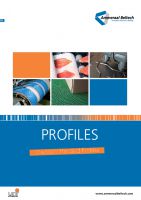Elastomer Conveyor Belts
Elastomer conveyor belts are conveyor belts for material transport (sometimes also referred to as CHEMPRENE).
The base consists of a fabric which is coated on the top and bottom with an elastomer such as EPDMSynthetic Ethylene Propylene Diene Monomer rubber, silicone or other rubber materials. The belt consists of one or more layers that ensure its strength, stability and cut resistance.
They are supplied in many variants in rolls as open-ended or endless belts exactly according to the customer's requirements.
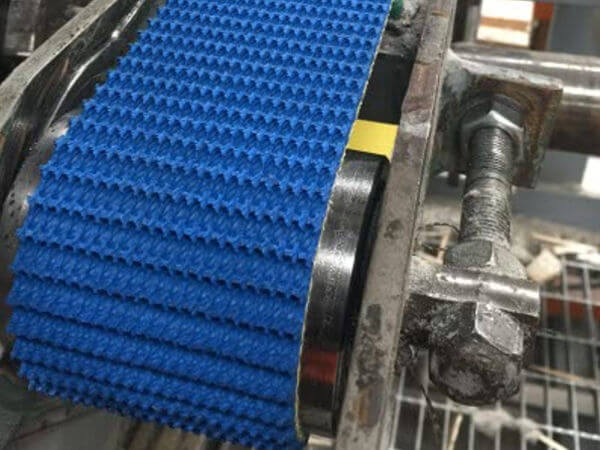
Main Types of Belt Materials
The main types of elastomer materials are:
-
BUTYL
Synthetic rubber. The material is resistant to cold from −18 °C and high temperatures up to +150 °C.
-
EPDM
Ethylene/propylene. The material is adhesive and resistant to abrasion, as well as oils and greases.
-
FABRIC
Polyester or cotton. The material is non-sticky and suitable for humid environments. Its temperature resistance range is from −40 °C to +121 °C.
-
NITRILE
Nitrile rubber. The material is resistant to abrasion. The temperature resistance range is from −18 °C to +135 °C.
-
NITRILE BX
Carboxated rubber. The material is very resistant to abrasion.
-
NR
Natural rubber. It is an adhesive material.
-
SBR
Synthetic rubber. The material is resistant to abrasion. The temperature resistance range is from −40 °C to +121 °C.
-
SILAM
Silicone. The material is resistant to cold from −54 °C and high temperatures up to +135 °C. It is a non-sticky and chemically resistant material.
-
TEFLON
PTFE teflon. Non-sticky material.
Belts Construction
The base of the belt is formed by a fabric which is coated on the top and bottom side with an elastomeric material.
The belt consists of one or more layers that ensure its strength, stability and cut resistance.
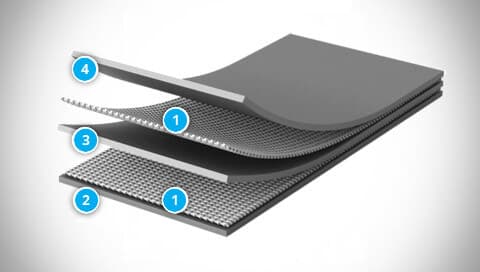
- Fabric
- Bottom cover layer
- Inner layer
- Top cover layer
Belts Fields of Use
BUTYL conveyor belts are designed for use mainly in the food industry.
EPDM conveyor belts are designed especially for the paper industry or in carton and general transport.
FABRIC conveyor belts are mainly used in the rubber industry or in tobacco preparation plants.
NITRILE conveyor belts are used mainly in the chemical industry - for example in the production of washing powders. We can also find them in the food industry.
NITRILE BX conveyor belts are designed especially for the woodworking industry, for the carton industry or for the transport of sugar.
NR conveyor belts are used in agriculture, but they are also intended for distribution centers and airports as well as for the cartoning industry.
SBR conveyor belts are used mainly for general transport - in distribution centers and at airports. They are also designed for application in agriculture, for the woodworking industry or for the carton industry.
SILAM conveyor belts are designed for applications with high temperatures - especially for the food industry or for the rubber industry.
TEFLON conveyor belts are designed for application especially in the food industry.
Belts Code Description
NITRILE EM12/3 10+13 White FG
| Code | Description | ||||||||||||||||||||||||||||
|---|---|---|---|---|---|---|---|---|---|---|---|---|---|---|---|---|---|---|---|---|---|---|---|---|---|---|---|---|---|
| NITRILE |
Product name |
||||||||||||||||||||||||||||
| EM |
Fabric type |
||||||||||||||||||||||||||||
| 2 |
Force at 1% elongation [N/mm] |
||||||||||||||||||||||||||||
| 3 |
Number of plies |
||||||||||||||||||||||||||||
| 10 |
Bottom cover layer / profile |
||||||||||||||||||||||||||||
| 13 |
Top cover layer / profile |
||||||||||||||||||||||||||||
| White |
Colour |
||||||||||||||||||||||||||||
| FG |
Additional information, characteristics:
|
Belts Joints
Joints can be made depending on the material of which the particular belt is made. You will find the exact information in the technical documentation of the selected belt.
| Joint Type | Description | Illustration |
|---|---|---|
Simple Finger Splice |
A simple punched splice, that is joined into an endless belt by heat on a splicing machine. It is performed on belts with one fabric layer. |
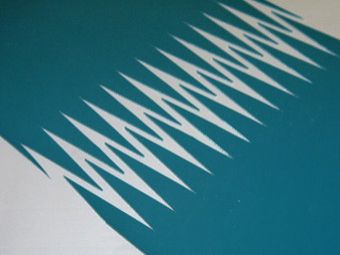 |
Double Finger Splice |
Combined splice. First the belt must be separated into individual layers, which are then prepared separately for splicing. On the splicing machine, the layers are subsequently joined into an endless belt by heat. It is performed on multilayer belts. |
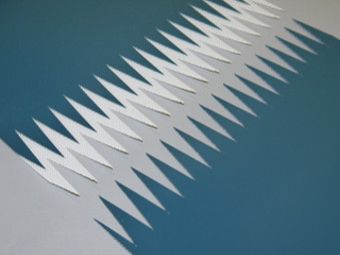 |
ZipLock |
A special belt connecting insert with a ZipLock connection is inserted into the belt. The belt can be connected directly in working place without any special machines or tools. ZipLock is designed for easy and quick belt replacement in highly exposed places, such as airports or distribution centres, or in inaccessible places, such as conveyors installed at high levels, very short conveyors or built-in conveyors. |
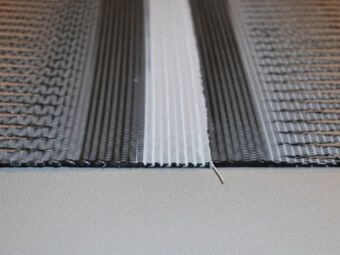 |
Anker A Wire Hooks |
Wide range for use in all operations from packaging lines, pharmaceutical industry, food industry, laundries. These are the most used connectors for PVC belts. |
 |
Anker G Lacing |
Basic connection with lower strength, for which no installation jig is required. Ideal for undemanding joints. It is used especially by customers who do not connect belts too often. |
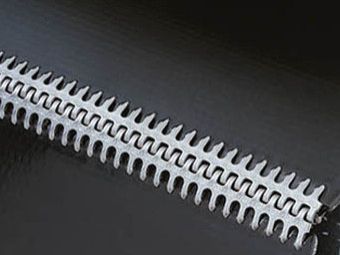 |
Alligator RS – Ready Set |
Easy installation, good strength and possible to use for pulleys with small diameters. Ideal for sorting lines, applications in agriculture, etc. |
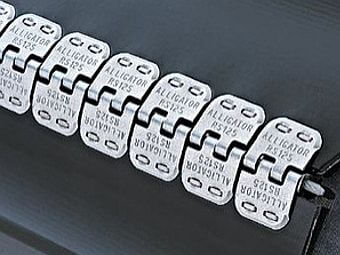 |
In addition to the above-mentioned most common types, it is possible to connect belts by other methods according to the requirements of the specific application. Our specialists will be happy to provide you with more information.
Belts Surface Structure
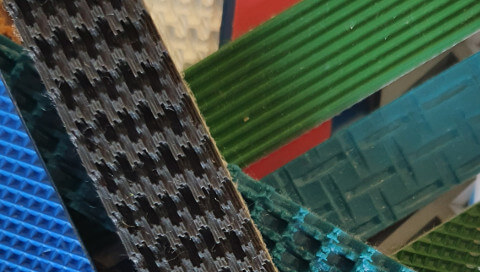
The surface structure ensures the specific properties of the belt. Applications range from easy separation of the product from the belt to the use of surface adhesion in technological processes or for inclined transport.
The surface structures can be on the top or bottom cover layer. The choice of structure depends on the properties of the transported product.
There are many types of structures in the product range. The most common can be found in the Overview of Standard Surface Profiles (PDF file for download).
Belts Accessories
Guides
Guide profiles ensure direct belt guidance and prevent belt movement on the rollers. The result is a smooth guidance without a polygon effect, which is also suitable for higher speeds.
Profiles made of PVC, polyurethane or polyester are welded or glued to the bottom side of the conveyor belt.
The V-profile can also be used as a transverse carrier or side edge for transporting material.
The most common way of guiding the belt is a V-guide.
| Profile Type | Description | Illustration |
|---|---|---|
Full V-Profile |
The smooth, clean design of the wedge is less prone to contamination. |
 |
Lightweight V-Profile |
On the bottom side of the belt there is a wedge with pressed teeth, which allow easier bending and thus smaller cylinder diameters than solid wedges. |
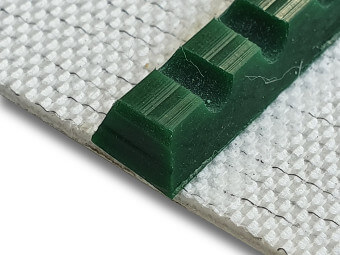 |
In addition to the V-profiles, the guide profiles can also be square. However, their use is far from numerous. If you are interested in implementing square guide profiles, please contact us.
Additional Belts Modifications
Punching
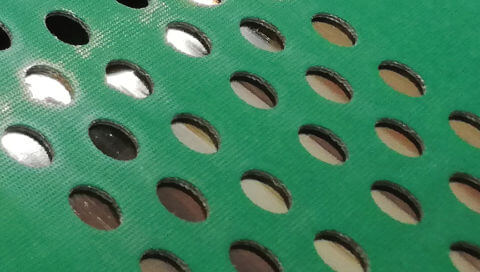
Punching of conveyor belts is performed for the transport of products using vacuum and for applications with photocell control.
Punching is performed on punching machines, which are able to produce punching in a precisely defined arrangement.
Documents for Download
Manufacturer Profile
Founded in 1950, Ammeraal Beltech is a global market leader in the design, manufacturing, fabrication and servicing of high-quality, high-performance process and conveyor belts, available today in 150 countries around the world. You can find their products almost in all industries. They employ over 2,750 people in the business.
They operate 10 manufacturing sites in Europe, the USA, Canada and Asia. They have sales and fabrication centres at over 80 sites worldwide and they have own subsidiaries in more than 25 countries.
Since 2012, our company has been an official distributor.

